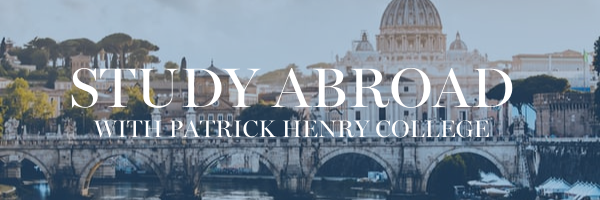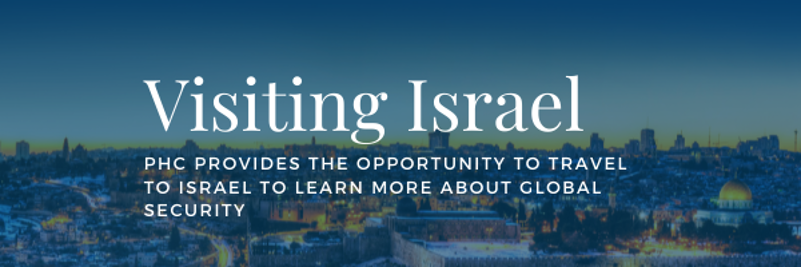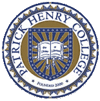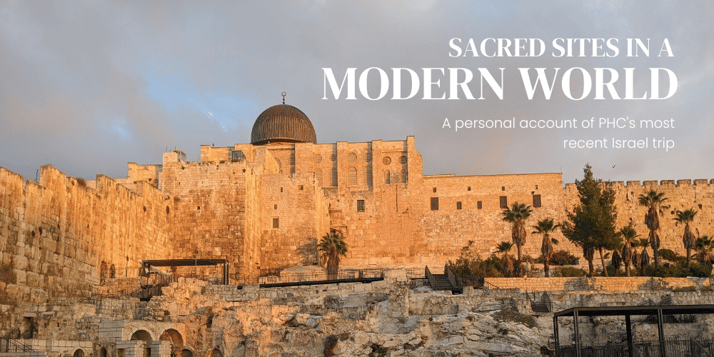
More than 10 hours after boarding our flight, 25 PHC students, Dr. Tracey McGrath, Dr. Steve Hake, and six students from other schools entered Israel. We quickly met our guide, Anton. He was one of the biggest blessings on our trip, as his explanations combined the history of the land with the context of the Bible. As we drove to our hotel in the dark, we couldn’t really see a difference between Israel and home, except that here, opening hotel doors was...trying. It wasn’t until morning when the parrots came out, the Sea of Galilee was in view, and the sun rose over the patchy, rocky hills of Israel that we realized how different a world we had stepped into.
During our three days in the Galilee region, Anton read Scripture while we sat on the shores of the Sea or walked through Tel Dan, Israel’s northernmost city, making every scene easier to envision. For all the churches we visited, the Sea of Galilee and historical ruins were the sites that felt the most sacred. Out on a sea cruise, the wind was just strong enough to surround us with a stiff breeze as we watched birds dive for (and catch) fish. Even far from shore, we could see the cliffs surrounding us and pick out towns where Jesus might have been. We even got to try some of the same fish Jesus would have eaten, an experience where I learned I prefer fish fillets to whole fish. These days felt quieter, but the times of reflection were immensely valuable.
Visiting the Golan Heights proved to be our coldest experience. Unfortunately, that day almost no one brought their big coats. We traveled up the (now paved) road to Damascus to reach the highest point in Israel where we could see across the border into Jordan. We could hardly hear Anton over the wind, our electronic headsets where a whisper in comparison to the roar that surrounded us. While Anton explained more about the Palestinian conflict, we huddled down in a military bunker just out of the wind and waited to be allowed back on the bus. Kyle Phillips squatted down, pulling his sweatshirt over his knees. Thankfully, we ended the day at an olive orchard and tested fancy olive-based skincare. I have never seen so many guys try to awkwardly apply aftershave at the same time.
We visited Bethlehem, separated from Jerusalem by walls and checkpoints denoting Palestinian control. Beyond the checkpoints, culture is different. Skyscrapers and cars crowd the area behind the graffiti-covered wall and drivers jump the curbs to make it through traffic. We made it to the Church of the Nativity just before closing, racing through crowded streets and in front of traffic to enter a dark church filled with the smell of incense. The cave beneath the church felt more peaceful, but even that did not dispel the rushed feeling, knowing that outside the city bustled in preparation for the coming of Orthodox Christmas two days later. 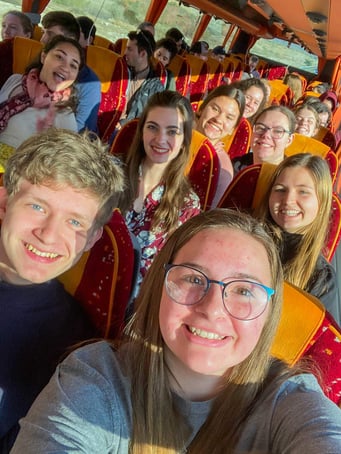
Jerusalem was similarly busy. We explored the Thursday night market with Anton and his archaeologist wife Maya, shoving through crowds to find the best gelato. Dancers moved along the street, and singers stood outside the closed shops to perform. While it was another shot of chaos, it was a raw glimpse of Israeli culture.
The Western Wall is where many students reported feeling most connected to Israeli culture because we were able to participate in the celebration of Shabbat. Dr. Hake had an especially unique experience. When we returned to the bus after leaving the Western Wall, Dr. Hake came to the front to tell us his story. While sitting at the Damascus Gate, he tried with difficulty to make eye contact with people. Were they avoiding him? When he finally connected with a lady, she came back and tried to give him alms, thinking he was a beggar. Beggars are no less common in Israel than America. They sat at the gate of the Basilica of Annunciation with open wounds, and no healing. They listened to Anton talking about the layout of Jerusalem at the top of the Mount of Olives, not asking for anything, standing with us just to learn.

We began our final day in Israel viewing Jerusalem from the Mount of Olives. I was struck by how the Mount of Olives kept the Temple Mount in view, while the Garden of Gethsemane was one of the only places on the mountain where Christ and the disciples might not have been able to see the temple. From there, we went to the Church of the Holy Sepulcher and the Garden Tomb, hitting the holiest Christian sites all in one day.
I expected holiness to be a feeling, or an air surrounding these places. The reality is that “holy sites” are distinguished by tradition. The ground, the walls—they’re no different than anywhere else. What I took away from those places was the time I spent reflecting and trying to see things the way Jesus did. It was never the building itself, or the precipice, or the reward of reaching the top. It was the reminders of God’s faithfulness to his people and the reality of His incarnation.
As much as those things were accentuated in Israel, we have those things here, too. There are Jewish communities here, places to read Scripture aloud, people to pray with and for. Going to Israel made the Bible come alive in a new way for me, but perhaps my most important takeaway is that we still live in the same world. God’s desires for his people don’t change based on our geographical location. Israel is set apart in the world, and the earth is set apart in the universe. Where we are is what we have been given to steward for the glory of God.
-----


